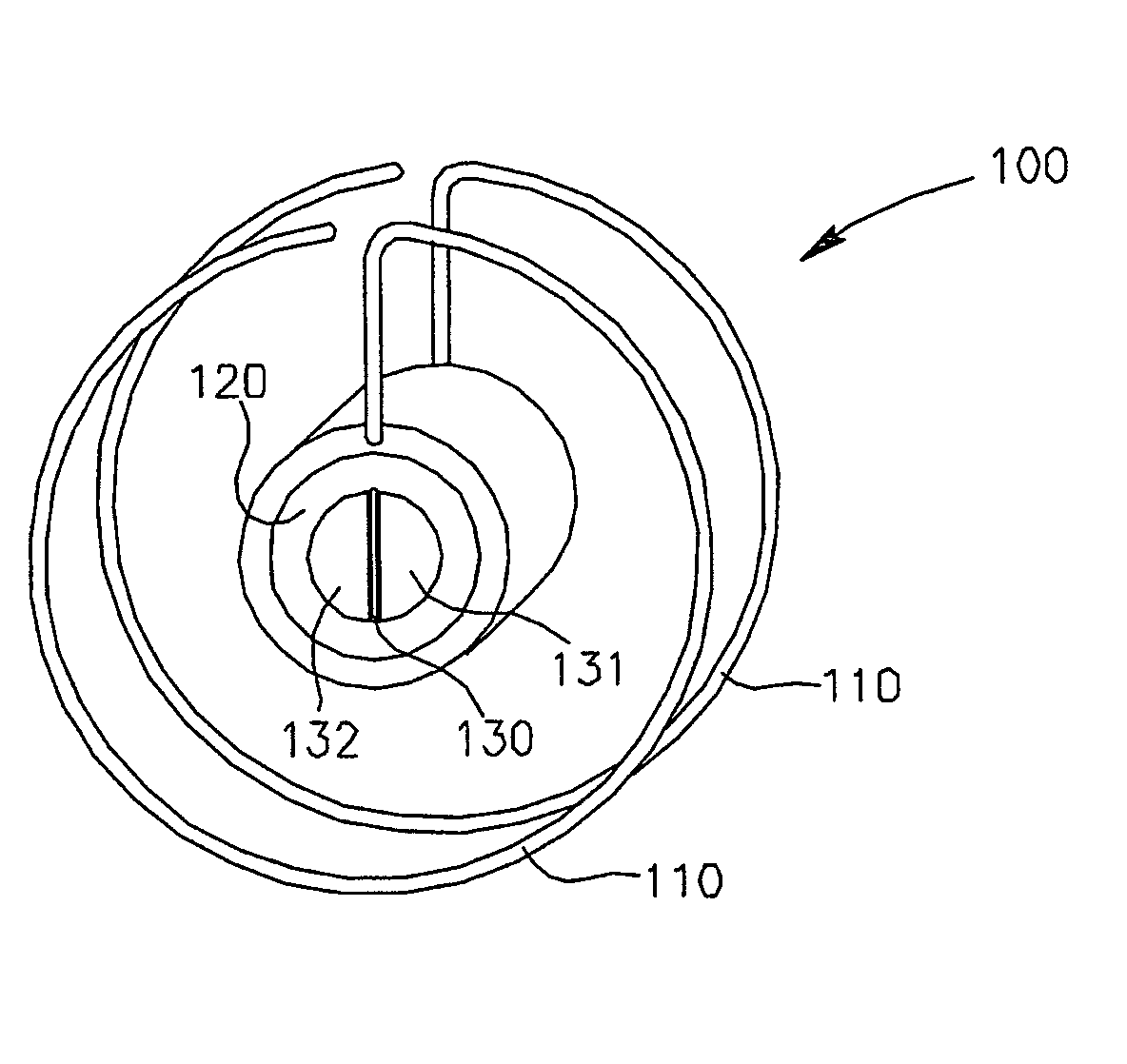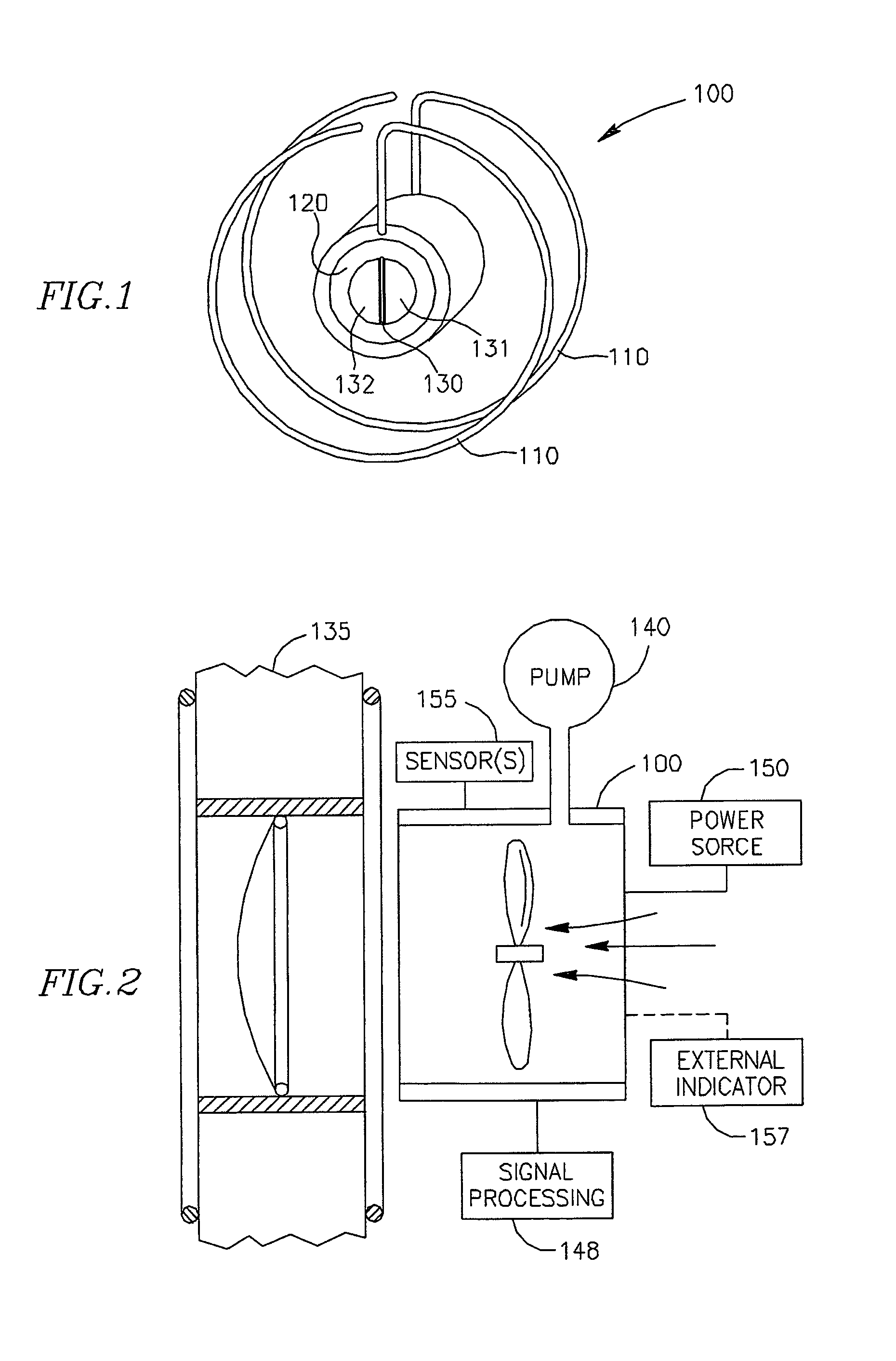Methods and apparatus for reducing localized circulatory system pressure
a localized circulatory system and pressure reduction technology, applied in the direction of prosthesis, application, wound drains, etc., can solve the problems of low exercise tolerance, congestive heart failure, and impaired ventricular relaxation, so as to reduce the increased diastolic pressure, reduce the pressure, and reduce the end-diastolic pressure of the left ventricular
- Summary
- Abstract
- Description
- Claims
- Application Information
AI Technical Summary
Benefits of technology
Problems solved by technology
Method used
Image
Examples
Embodiment Construction
[0019]Referring now to FIG. 1, there is shown a perspective view of a first embodiment of a shunt 100 made in accordance with the present invention. The shunt 100 is comprised of a fixation element 110, which is shown as a planar circular element having first self-expanding end region 175 and second self-expanding end region 172. It will be understood, however, that the fixation element 110 can be circular, polygonal, spiral or many other shapes. Moreover, the fixation element can lie in a single plane or be curved in multiple planes, such as in a helical configuration. It can be constructed of a variety of materials that offer the elastic range and spring-like characteristics that will enable passage through a catheter lumen, or through the lumen of another implantation assistance device, in a relatively straightened configuration and then recovery of its full fixation configuration shape, that is, the first and second self-expanding end regions 175, 172 may be compressed into a lu...
PUM
 Login to View More
Login to View More Abstract
Description
Claims
Application Information
 Login to View More
Login to View More - R&D
- Intellectual Property
- Life Sciences
- Materials
- Tech Scout
- Unparalleled Data Quality
- Higher Quality Content
- 60% Fewer Hallucinations
Browse by: Latest US Patents, China's latest patents, Technical Efficacy Thesaurus, Application Domain, Technology Topic, Popular Technical Reports.
© 2025 PatSnap. All rights reserved.Legal|Privacy policy|Modern Slavery Act Transparency Statement|Sitemap|About US| Contact US: help@patsnap.com



